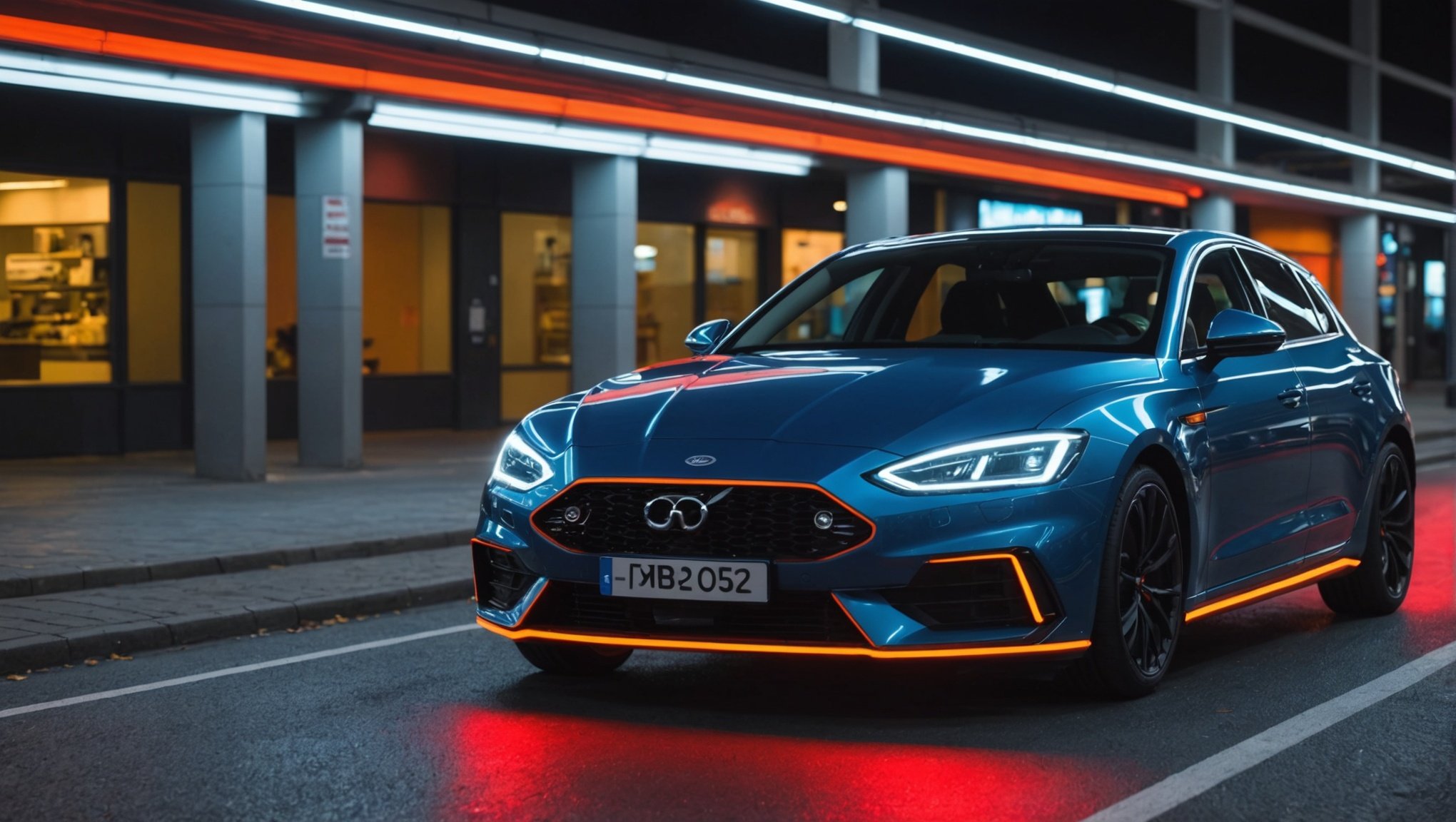There’s a certain allure to the radiant glow of neon underglow lighting on vehicles, transforming an ordinary car into an eye-catching spectacle. This trend, which gained popularity in car modification circles worldwide, raises questions about its legality and safety. For those of you interested in adding neon underglow lighting to your vehicle in the UK, it’s crucial to understand the regulations before proceeding. This article delves into the specifics of UK laws surrounding neon underglow lighting, providing you with comprehensive information to keep you on the right side of the law.
Overview of Neon Underglow Lighting
Neon underglow lighting refers to the installation of neon or LED lights on the underside of a vehicle. These lights are intended to illuminate the ground beneath the car, creating an aesthetically pleasing effect, especially at night. While the visual appeal of neon underglow lighting is undeniable, its usage on public roads is subject to stringent regulations.
Also to see : How can you legally swap a petrol engine for a diesel engine in a UK vehicle?
In the UK, the regulations surrounding vehicle modifications, including underglow lighting, are governed by the Road Vehicles Lighting Regulations 1989. These rules ensure that all vehicle lights meet safety standards, preventing distractions and ensuring uniformity on the roads.
Legal Framework Governing Underglow Lighting
To understand the intricate details of what is allowed, it’s essential to familiarize yourself with the Road Vehicles Lighting Regulations 1989. This legislation outlines the legality of various lighting modifications and serves as the foundation for understanding how neon underglow lighting can be used legally.
Topic to read : How do you properly adjust and balance a carburetor in classic UK cars?
According to these regulations, any light visible from the underside of the vehicle must not cause undue distraction to other road users. The primary purpose of these rules is to ensure safety and prevent accidents caused by unconventional lighting setups. Generally, the regulations stipulate that certain colors and positions for lights are restricted.
For instance, the use of red lights is strictly reserved for the rear of the vehicle, while white lights are designated for the front. Under these rules, neon underglow lights must not be red or blue, as these colors are associated with emergency vehicles and could confuse other drivers. Additionally, any light that can be mistaken for an indicator or brake light is prohibited.
Practical Considerations for Installing Neon Underglow Lighting
When considering installing neon underglow lighting on your vehicle, numerous practical aspects must be addressed to ensure compliance with UK regulations. First and foremost, the placement of the lights is critical. Neon lights must be installed in a manner that does not expose the individual bulbs to direct view. The glow should reflect off the ground rather than being directly visible to other road users.
Moreover, the intensity of the lights should be kept in check. Excessively bright lights can be distracting and pose a safety hazard. It is advisable to opt for lights with a moderate lumen output, sufficient to provide the desired underglow effect without causing visibility issues.
Another vital consideration is the connection and control of the underglow lights. The lights should be wired to a switch that allows you to turn them off when necessary. This is particularly important because even if your underglow lighting setup is road legal, there may be situations where turning them off is advisable, such as driving in foggy conditions or when passing an area with a high concentration of pedestrians.
Enforcement and Penalties for Non-Compliance
Understanding the enforcement mechanisms and potential penalties associated with non-compliance is crucial for anyone considering neon underglow lighting. Police officers in the UK have the authority to stop vehicles they suspect of contravening lighting regulations. If your vehicle is found to have illegal lighting, you can be issued a notice requiring you to rectify the issue.
In severe cases, non-compliance can lead to fines or even prosecution. The penalties for contravening the Road Vehicles Lighting Regulations 1989 are significant, underscoring the importance of adhering to these rules. Besides fines, your vehicle may fail its MOT if it is found to have illegal lighting modifications. This could result in further financial implications and the inconvenience of having to revert the modifications.
Taking the time to understand and comply with these regulations not only helps you avoid legal trouble but also contributes to safer roads. Neon underglow lighting, when used responsibly and within the bounds of the law, can be a stylish addition to your vehicle without compromising safety or legality.
Public Perception and Ethical Considerations
The use of neon underglow lighting is not just regulated by law but also influenced by public perception and ethical considerations. While some may view underglow lighting as a form of automotive artistry, others might perceive it as unnecessary or even disruptive. It’s important to consider how your modifications might be received by the general public and other road users.
One ethical consideration is the potential for underglow lighting to distract or startle other drivers, particularly in low-light conditions. Distraction can lead to accidents, which is why the regulations are stringent about the visibility and intensity of such lights. Additionally, neon underglow lighting can be seen as a form of light pollution, especially in residential areas where excessive lighting can be a nuisance.
Balancing personal expression with public responsibility is key. Opt for designs and colors that are less likely to cause distraction or annoyance. Being mindful of where and when you activate your underglow lights can also reduce potential negative impacts on other road users.
Engaging with car enthusiast communities and forums can provide valuable insights into how to use underglow lighting responsibly. These communities often share best practices and tips to ensure modifications are both legal and socially acceptable. Your choice to use neon underglow lighting should reflect a commitment to both personal style and communal safety.
In conclusion, while neon underglow lighting can add a unique and visually appealing element to your vehicle, it is imperative to adhere to the specific regulations set forth by the UK government. Understanding the Road Vehicles Lighting Regulations 1989 is essential in ensuring that your modifications are legally compliant and do not pose a threat to road safety.
From the placement and intensity of the lights to the colors and control mechanisms, every detail must be carefully considered to avoid legal penalties and contribute to safer roads. Additionally, considering public perception and ethical implications can help you balance personal expression with communal responsibility.
By following these guidelines, you can enjoy the aesthetic benefits of neon underglow lighting while remaining within the bounds of the law. This ensures not only your safety but that of all road users, making the driving experience enjoyable and secure for everyone.











